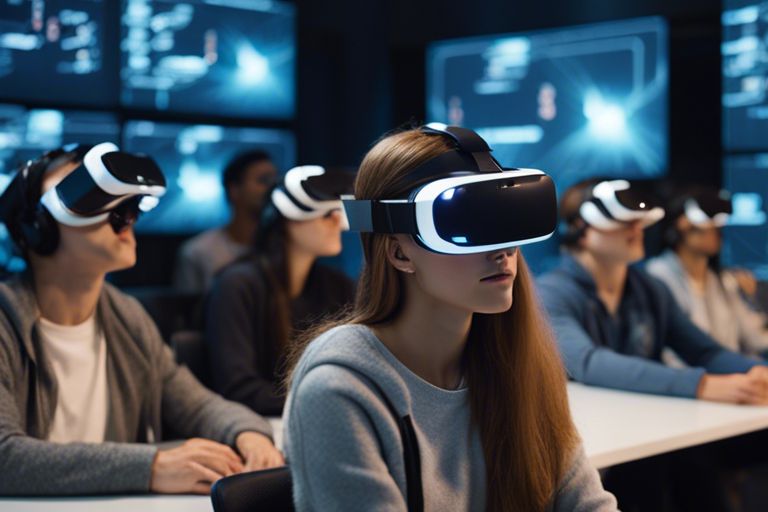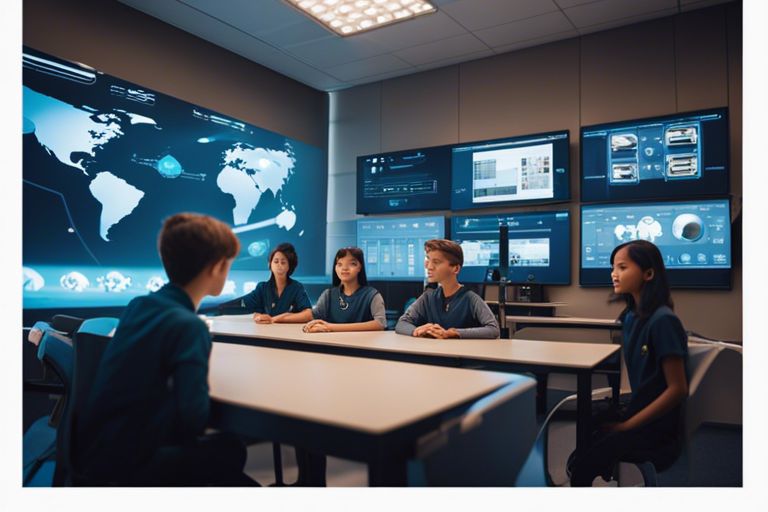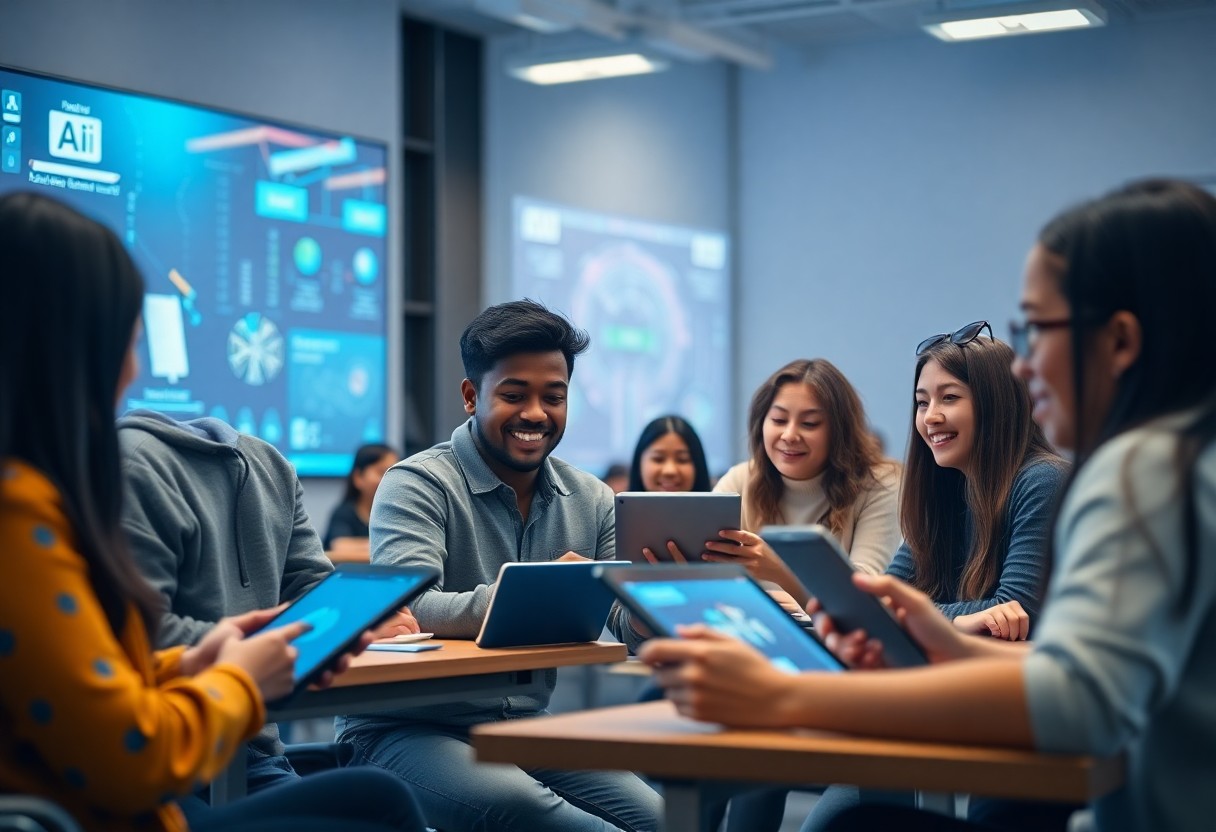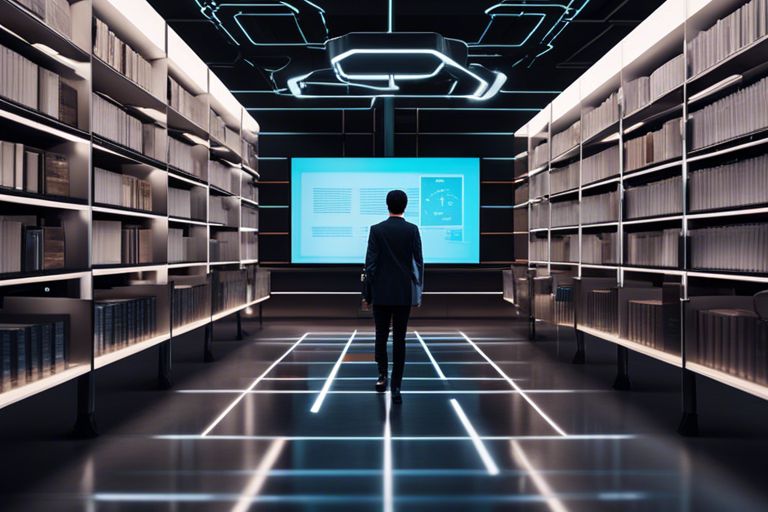VirtualReality has revolutionized the landscape of education by offering immersive and engaging hands-on learning experiences through AI-powered simulations. This groundbreaking technology not only enhances students’ understanding of complex concepts but also provides a safe environment for experimentation, reducing the risk of dangerous real-life scenarios. Dive into the world of virtual reality simulations and discover the future of education with enhanced learning opportunities.
The Power of Hands-On Learning
Limitations of Traditional Methods
On the journey of education, traditional teaching methods have often struggled to provide students with hands-on experiences that are crucial for a deeper understanding of complex subjects. The limitations of traditional methods can be seen in the inability to fully engage students in practical applications of theoretical knowledge. This lack of practical experience can hinder students’ ability to grasp concepts fully and apply them in real-world scenarios.
The Need for Immersive Experiences
An effective way to address the limitations of traditional teaching methods is through immersive experiences that allow students to engage fully with the subject matter. By incorporating virtual reality (VR) simulations powered by artificial intelligence (AI), educators can provide students with realistic and interactive environments to explore and learn. This innovative approach not only enhances understanding but also increases retention rates and engagement levels among students.
HandsOn learning experiences help students develop critical thinking and problem-solving skills by immersing them in scenarios where they can apply theoretical knowledge in practical situations. These immersive experiences not only make learning more engaging and memorable but also prepare students for the challenges they may face in their future careers.
The Rise of Virtual Reality in Education
Early Adoption and Challenges
Some educational institutions have started to embrace virtual reality (VR) technology as a powerful tool to enhance hands-on learning experiences. However, the adoption of VR in education comes with its challenges. Schools and universities often face hurdles such as the high cost of VR equipment, the lack of technical expertise among educators, and the need for tailored VR content to align with educational objectives.
Advancements in VR Technology
The rapid advancements in VR technology have paved the way for more immersive and interactive learning experiences in education. For instance, AI-powered simulations in VR can provide personalized learning paths for students, catering to their individual needs and learning styles. These simulations can also offer instant feedback and assessments, allowing educators to track student progress more efficiently.
The Role of Artificial Intelligence in VR Simulations
Little by little, Artificial Intelligence (AI) is revolutionizing the landscape of Virtual Reality (VR) simulations, offering a more immersive and tailored experience for users. In VR educational simulations, AI plays a crucial role in enhancing the learning environment and adapting to users’ needs in real-time.
AI-Generated Environments and Scenarios
Environments generated by AI in VR simulations are dynamic and responsive, creating a more engaging experience for users. AI algorithms can generate scenarios that adapt to users’ actions, providing a personalized learning journey. These AI-generated environments can simulate complex real-world situations, offering users the opportunity to practice problem-solving in a safe and controlled setting.
Intelligent Agents and Adaptive Difficulty
Difficulty levels in VR simulations, powered by AI, can be adjusted in real-time based on users’ performance and behavior. Intelligent agents within the simulation can analyze users’ actions and provide tailored challenges to ensure optimal learning outcomes. This adaptive difficulty feature not only keeps users engaged but also promotes continuous learning and improvement.
With intelligent agents and adaptive difficulty, VR simulations can cater to users with varied skill levels, making the learning experience more inclusive and effective. AI-powered simulations have the potential to revolutionize hands-on learning by providing personalized feedback and challenges that can enhance users’ skills in a dynamic and interactive environment.
Enhancing Learning Outcomes with VR Simulations
Increased Engagement and Motivation
Outcomes: Despite the traditional learning methods being effective to some extent, they often struggle to keep students engaged and motivated throughout the learning process. By incorporating virtual reality (VR) simulations powered by artificial intelligence (AI), educators can significantly enhance student engagement and motivation levels. The immersive and interactive nature of VR simulations captivates students’ attention, making learning more enjoyable and stimulating.
Students are more likely to stay focused and actively participate in their education when using VR simulations. The real-time feedback and personalized learning experiences provided by AI algorithms further enhance motivation by offering challenges tailored to each student’s needs. As a result, students are more invested in their learning journey, leading to improved overall outcomes.
Improved Retention and Recall
Motivation: In addition to increased engagement and motivation, VR simulations powered by AI contribute to improved retention and recall of information. The multisensory experience offered by VR simulations helps create stronger memory associations, making it easier for students to recall learned concepts. The interactive nature of VR simulations requires active participation, which reinforces learning and enhances memory retention.
Simulations: Students can practice and apply their knowledge in a simulated environment, allowing for hands-on learning experiences that are crucial for long-term retention. The adaptability of AI algorithms in the simulations ensures that students receive personalized feedback and reinforcement, further solidifying their understanding of the material. Overall, the combination of VR simulations and AI technologies leads to a significant improvement in students’ ability to retain and recall learned information.
Developing Critical Thinking and Problem-Solving Skills
Many educators are turning to virtual reality simulations powered by AI to enhance hands-on learning experiences and develop critical thinking and problem-solving skills in students. By immersing learners in realistic scenarios and challenges, these technologies enable students to apply their knowledge in practical settings, fostering a deeper understanding of complex concepts.
Real-World Applications and Scenarios
Skills acquired through virtual reality simulations extend beyond the classroom, preparing students for real-world challenges. For example, medical students can practice surgical procedures in a virtual operating room, honing their critical thinking skills under pressure. Engineering students can work on complex design projects, troubleshooting and problem-solving in a simulated environment.
Encouraging Analytical Thinking and Decision-Making
For students, virtual reality simulations offer a safe space to make decisions and see the consequences play out in a controlled setting. By presenting students with various scenarios and outcomes, these simulations encourage analytical thinking and decision-making skills. Students must assess information, weigh options, and make informed choices, actively engaging in the learning process.
With virtual reality simulations powered by AI, educators can track students’ progress and decision-making patterns, providing valuable insights into areas where students excel or need improvement. This data-driven approach allows for personalized learning experiences, tailored to the individual needs of each student, further enhancing their critical thinking and problem-solving skills.
Overcoming Barriers to Hands-On Learning
Accessibility and Inclusivity
To ensure that hands-on learning experiences are truly valuable, accessibility and inclusivity must be at the forefront. Virtual reality simulations powered by AI have the potential to break down barriers for individuals with physical disabilities or those who may not have access to traditional hands-on learning materials. By providing virtual environments that can be navigated regardless of physical limitations, AI-powered simulations open up opportunities for a broader range of learners to engage in hands-on learning experiences.
Cost-Effective Solutions for Resource-Constrained Environments
To address the issue of limited resources in educational settings, virtual reality simulations powered by AI offer cost-effective solutions. These simulations can provide a wide range of hands-on learning experiences without the need for expensive equipment or materials. AI algorithms can adapt to individual learning styles, making the virtual experience more personalized and effective, ultimately maximizing the educational impact.
Cost-effective virtual reality solutions powered by AI can level the playing field for schools and institutions with limited budgets, ensuring that all students have access to high-quality hands-on learning opportunities. By utilizing these advanced technologies, educators can provide immersive learning experiences that were once out of reach due to financial constraints.
The Future of Education: AI-Powered VR Simulations
All educators aspire to provide personalized learning experiences to their students, but with traditional classroom settings, this goal can be challenging to achieve. AI-powered VR simulations are transforming the landscape of education by offering personalized learning paths and adaptive assessments. One notable advantage of this technology is its ability to cater to the individual needs of each student, ensuring that they receive tailored content and challenges based on their proficiency level.
Personalized Learning Paths and Adaptive Assessments
One of the most significant advantages of AI-powered VR simulations in education is the ability to create personalized learning paths for students. By analyzing a student’s performance and behavior within the virtual environment, AI algorithms can adapt the content and difficulty of simulations in real-time. This dynamic approach not only keeps students engaged but also helps them learn at their own pace, leading to a deeper understanding of the material.
Real-Time Feedback and Performance Tracking
Paths to success in education are often hindered by a lack of immediate feedback and progress tracking. AI-powered VR simulations address this challenge by providing real-time feedback on students’ actions and performance within the virtual environment. Educators can access detailed reports on how each student is progressing, allowing them to intervene when necessary and provide additional support where needed. This level of insight into student performance can help educators make informed decisions about the direction of their teaching, ultimately enhancing the learning experience for all.
It is crucial to note that real-time feedback and performance tracking enable educators to identify areas where students may be struggling, allowing for targeted interventions to support their learning journey. By pinpointing these challenges early on, educators can offer timely assistance and guidance, maximizing the potential for student success in the virtual learning environment.
Teacher Training and Support
Professional Development Opportunities
Support for teachers is important when implementing virtual reality (VR) simulations powered by artificial intelligence (AI) in the classroom. Professional development opportunities can help educators navigate the new technology and incorporate it effectively into their teaching practices. Workshops, courses, and online resources can provide teachers with the knowledge and skills needed to leverage VR simulations for enhanced hands-on learning experiences.
Integrating VR Simulations into Existing Curricula
Any successful integration of VR simulations into existing curricula requires careful planning and collaboration among teachers, administrators, and technology experts. Educators should align the VR simulations with learning objectives and ensure they complement the existing curriculum. By integrating VR simulations strategically, teachers can create immersive learning experiences that engage students and deepen their understanding of complex concepts.
To ensure a seamless integration of VR simulations into existing curricula, teachers should receive ongoing support and training to utilize the technology effectively. By incorporating VR simulations into their teaching practices, educators can cater to different learning styles and provide students with a more interactive and dynamic learning environment.
Addressing Concerns and Challenges
Once again, as with any technological advancement, integrating virtual reality simulations powered by AI in hands-on learning experiences comes with its own set of concerns and challenges that need to be addressed. These include technical issues, infrastructure requirements, equitable access, and digital literacy.
Technical Issues and Infrastructure Requirements
One of the primary concerns when implementing virtual reality simulations in education is the technical infrastructure needed to support these programs. Ensuring a stable internet connection, compatible devices, and sufficient processing power are vital for a seamless VR experience. Schools and educational institutions must invest in the necessary hardware and software to make these simulations accessible to students.
Ensuring Equitable Access and Digital Literacy
One of the major challenges faced in implementing VR simulations in education is ensuring equitable access for all students and promoting digital literacy. Not all students may have access to the required technology at home, leading to disparities in learning opportunities. Addressing these access issues is crucial to ensure that all students can benefit from the immersive learning experiences offered by VR simulations.
To tackle these challenges, educational institutions must invest in technology resources and infrastructure to provide equal access to all students. Additionally, promoting digital literacy skills among students from an early age can help bridge the gap and prepare them for utilizing VR simulations effectively in their learning journey.
Real-World Applications and Industries
Healthcare and Medical Training
Now, virtual reality simulations powered by AI are revolutionizing healthcare and medical training. These technologies allow medical students and professionals to gain hands-on experience in a risk-free environment, practicing surgical procedures, patient care, and emergency responses. By simulating realistic scenarios, VR simulations enhance critical thinking skills and decision-making abilities in medical professionals, leading to improved patient outcomes and safety.
STEM Education and Career Development
To enhance STEM education and career development, virtual reality simulations powered by AI are being utilized in schools and universities to provide students with immersive learning experiences. These simulations allow students to explore complex scientific concepts in a more engaging and interactive way, fostering creativity and problem-solving skills. By incorporating AI, VR simulations can adapt to individual learning styles and pace, ensuring that students receive personalized education experiences.
Understanding the potential of VR simulations in STEM education and career development is crucial in preparing the next generation of scientists, engineers, and innovators. By providing hands-on experiences in virtual environments, students can develop practical skills and gain a deeper understanding of complex scientific principles, paving the way for future advancements and discoveries.
Measuring Success: Evaluating the Effectiveness of VR Simulations
Unlike traditional learning methods, the effectiveness of virtual reality (VR) simulations can be measured in various ways. To assess the impact of VR simulations, educators and researchers often employ a combination of quantitative and qualitative assessment methods.
Quantitative and Qualitative Assessment Methods
To evaluate the efficacy of VR simulations, quantitative methods such as pre- and post-test assessments, user performance metrics, and data analytics can provide valuable insights into the learning outcomes. Additionally, qualitative assessments through surveys, interviews, and observations can offer a deeper understanding of user experiences, perceptions, and learning processes within the virtual environment. By combining both quantitative and qualitative approaches, educators can obtain a comprehensive view of the effectiveness of VR simulations in enhancing hands-on learning experiences.
Longitudinal Studies and Follow-Up Research
Assessment: Longitudinal studies and follow-up research play a crucial role in evaluating the long-term impact and sustainability of learning outcomes achieved through VR simulations. By conducting follow-up assessments over an extended period, researchers can track the retention of knowledge and skills acquired in the virtual environment. These studies help in identifying any potential fading effects or transferability of learning from virtual simulations to real-world applications, providing valuable insights for improving future VR-based educational interventions.
Evaluating the effectiveness of VR simulations requires a multifaceted approach that considers various factors such as user engagement, knowledge retention, skill acquisition, and transferability to real-world scenarios. By utilizing a combination of quantitative and qualitative assessment methods, as well as conducting longitudinal studies and follow-up research, educators can gain a comprehensive understanding of the impact of VR simulations on hands-on learning outcomes.
The Potential for Interdisciplinary Collaboration
Combining Subjects and Disciplines
Not only does virtual reality simulation enhance hands-on learning in specific subjects, but it also opens up the potential for interdisciplinary collaboration. By combining different fields of study such as science, technology, engineering, art, and mathematics (STEAM), students can experience a more holistic approach to problem-solving and critical thinking. These immersive experiences can help students see connections between various disciplines that might not be apparent in traditional classroom settings.
Fostering Creativity and Innovation
Collaboration between students from different disciplines can lead to innovative solutions and creative breakthroughs. Virtual reality simulations powered by AI provide a platform for students to explore new ideas and approaches that go beyond the boundaries of any single discipline. By encouraging students to work together and think outside the box, these simulations can inspire out-of-the-box thinking and groundbreaking innovations.
Another benefit of fostering creativity and innovation through interdisciplinary collaboration is the development of adaptive problem-solving skills. When students from diverse backgrounds come together to tackle complex challenges using virtual reality simulations, they learn to adapt to different perspectives and ideas. This not only enhances their creativity but also prepares them for real-world scenarios where interdisciplinary collaboration is crucial for success.

Expanding Access and Opportunities
Democratizing Education through VR Simulations
After incorporating virtual reality (VR) simulations powered by artificial intelligence (AI) into educational settings, the potential for democratizing education is immense. Students from all backgrounds can now access high-quality educational experiences that were previously only available to a select few. This technology breaks down barriers to learning by providing immersive, interactive, and personalized learning experiences that cater to the diverse needs of learners.
Reaching Underserved and Marginalized Communities
On the path to expanding access and opportunities, VR simulations driven by AI hold the promise of reaching underserved and marginalized communities. By bringing educational resources directly to those who may have limited access to traditional learning environments, this technology creates new pathways for individuals who may have not had the same educational opportunities before.
Digital technologies have the power to bridge the gap between privileged and underserved communities, providing a more equitable educational landscape.
Access
Final Words
Upon reflecting on the potential of enhancing hands-on learning with virtual reality simulations powered by AI, it becomes clear that we are on the brink of a transformative moment in education. By leveraging these technologies, students can experience immersive and interactive learning experiences that were once unimaginable. The combination of virtual reality and artificial intelligence has the power to revolutionize the way we teach and learn, paving the way for a more engaging and effective educational landscape.
FAQ
Q: What is the significance of enhancing hands-on learning with virtual reality simulations?
A: Enhancing hands-on learning with virtual reality simulations powered by AI offers immersive and interactive experiences that can greatly enhance understanding and retention of complex concepts.
Q: How does virtual reality simulation improve the learning experience?
A: Virtual reality simulations provide a more engaging and interactive learning environment, allowing users to explore and interact with concepts in ways that traditional methods cannot replicate.
Q: What role does AI play in virtual reality simulations for hands-on learning?
A: AI technology enhances virtual reality simulations by providing personalized learning experiences, adaptive feedback, and intelligent analysis of user interactions to optimize learning outcomes.
Q: How can virtual reality simulations empower educators in the classroom?
A: Virtual reality simulations empower educators by providing tools to create interactive and dynamic learning experiences, catered to different learning styles and individual needs.
Q: What are the potential benefits of integrating virtual reality simulations in educational settings?
A: Integrating virtual reality simulations in educational settings can lead to improved student engagement, better knowledge retention, enhanced critical thinking skills, and increased motivation to learn.
Q: Are there any challenges or limitations to using virtual reality simulations in education?
A: Some challenges include the initial cost of implementing VR technology, the need for training educators to utilize the technology effectively, and ensuring access and equity for all students.
Q: How can educators incorporate virtual reality simulations into their curriculum effectively?
A: Educators can start by identifying learning objectives that can be enhanced through VR simulations, exploring available VR resources, providing proper guidance and support to students, and continuously evaluating the effectiveness of the VR integration in the curriculum.




